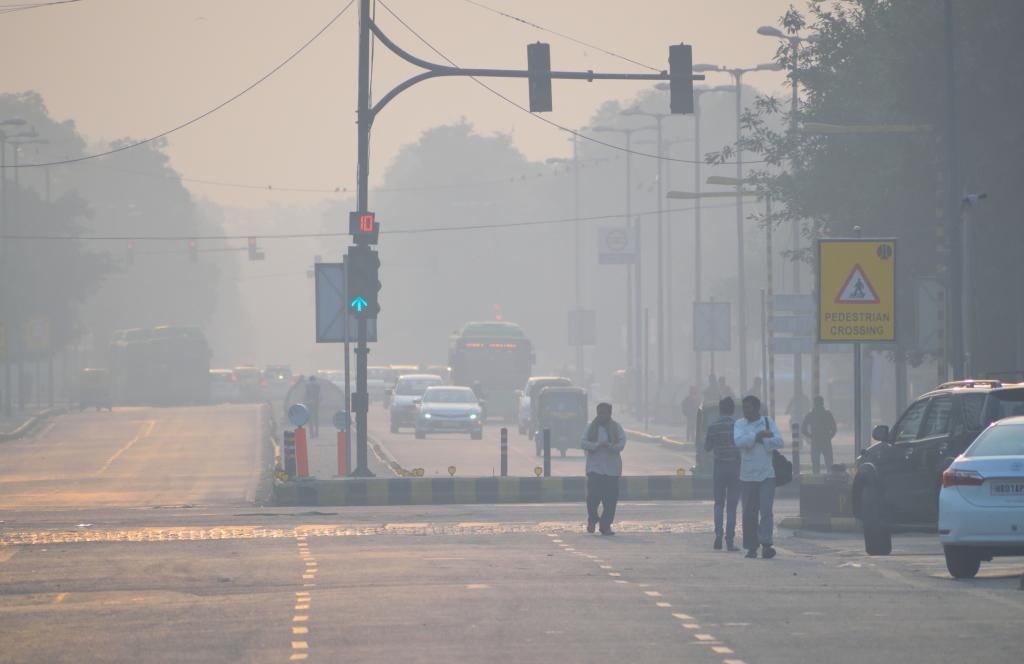Environment and Ecology: December 2024 UPSC Current Affairs | Current Affairs & Hindu Analysis: Daily, Weekly & Monthly PDF Download
Ground-Level Ozone Pollution in India

Why in News?
A recent investigation conducted by the Centre for Science and Environment (CSE) has highlighted the dangerously high levels of ground-level ozone (O3) in several major cities across India. This alarming situation raises significant public health concerns, particularly for vulnerable groups such as individuals with pre-existing respiratory conditions.
Key Takeaways
- High Ozone Exceedance: Delhi-NCR reported 176 days of ground-level ozone exceedance from January 1 to July 18, 2023, topping the list.
- Mumbai and Pune each recorded 138 days, while Jaipur had 126 days of exceedance.
- Ozone levels unexpectedly remained elevated after sunset in various cities, with Mumbai experiencing 171 nights and Delhi-NCR 161 nights of exceedance.
- Compared to the previous year, seven out of ten cities reported increased ozone exceedances, with Ahmedabad seeing an alarming increase of 4,000%.
Additional Details
- Standards and Measurement Issues: The established 8-hourly standard for ozone is set at 100 µg/m³, while the one-hour standard is 180 µg/m³. The Central Pollution Control Board limits data assessment at 200 µg/m³, complicating the evaluation of exceedance severity.
- Health Risks: Exposure to ground-level ozone is linked to various respiratory issues, including chest pain, coughing, bronchitis, emphysema, and asthma, and can damage the lungs, causing long-term health complications.
- Green Areas Worst Affected: Surprisingly, affluent, green neighborhoods have emerged as hotspots for ground-level ozone, challenging the notion that these regions are inherently safer regarding air quality. Ozone tends to accumulate in these cleaner areas due to the lack of competing gaseous pollutants.
- Inverse Spatial Distribution: The study revealed that ozone levels are inversely related to nitrogen dioxide (NO2) and particulate matter (PM2.5), indicating that while ozone forms in polluted regions, it tends to drift to areas with lower NO2 concentrations, which are then at a higher risk of elevated ozone levels.
What is Ground-Level Ozone?
- Definition: Ground-level ozone, also known as tropospheric ozone, is a secondary pollutant formed when nitrogen oxides (NOx) and volatile organic compounds (VOCs) from vehicles, industries, and power plants react under sunlight, particularly in summer. It is a colorless gas present just above the Earth's surface.
- Contrast with Stratospheric Ozone: Unlike the beneficial ozone layer in the stratosphere, which protects against harmful ultraviolet (UV) radiation, ground-level ozone is considered a harmful air pollutant, often referred to as "bad ozone."
- Impact of Rising Temperatures: Increased temperatures, especially during heatwaves, exacerbate the formation of ground-level ozone, resulting in hazardous air quality in cities like New Delhi when levels exceed safe limits.
- Global Impact: A significant rise in ozone-related deaths has been observed globally, with South Asia, including India, experiencing the most substantial increases. Projections indicate that by 2050, over a million deaths in India may be linked to ozone exposure if precursor gas emissions are not controlled adequately.
- Effect on Agriculture: Ground-level ozone is harmful to crop health, diminishing yields and seed quality. Essential crops such as wheat and rice, staples in India, are particularly threatened by ozone pollution, posing risks to food security.
Ratapani Wildlife Sanctuary

Why in News?
The Ratapani Wildlife Sanctuary is currently in the spotlight as it is being considered for the status of a tiger reserve by the government, highlighting its ecological significance and the ongoing conservation efforts in the region.
Key Takeaways
- Location: The sanctuary is located in the Raisen and Sehore districts of Madhya Pradesh, covering an area of 825.90 sq km.
- Geography: It features a rocky forest environment along the Vindhya Hills, parallel to the Narmada River, with the Kolar River marking its western boundary.
- UNESCO Site: The sanctuary includes the famous Bhimbetka rock shelters, which are recognized as a UNESCO World Heritage Site.
Additional Details
- Flora: The sanctuary is characterized by both dry and moist deciduous forests, with approximately 55% of the area covered by teak trees, alongside various dry deciduous species.
- Fauna: It is home to a range of wildlife, including about 40 tigers, endangered chinkaras, and various other species such as panthers, hyenas, jackals, and spotted deer.
- Historical Significance: The sanctuary also encompasses notable historical and religious sites, including Ginnourgarh Fort and several dams.
Global Plastic Treaty

Why in News?
Representatives from over 170 countries are convening in Busan, South Korea, for the fifth and final round of discussions aimed at crafting a legally binding global treaty to combat plastic pollution, especially in marine environments. This initiative stems from the agreement made at the 2022 UN Environmental Assembly, which called for the completion of the treaty by the end of 2024.
Key Takeaways
- The UN Environment Assembly (UNEA) passed a resolution in 2022 to "end plastic pollution."
- An Intergovernmental Negotiating Committee (INC) was established to create a global treaty governing plastic production and usage.
- 175 nations have committed to developing this binding agreement by 2024 to mitigate greenhouse gas emissions from plastics.
Additional Details
- Plastic Dependency: The production of plastic has surged from 234 million tonnes in 2000 to 460 million tonnes in 2019, with projections suggesting it could reach 700 million tonnes by 2040.
- Environmental Crisis: Plastic waste generation is around 400 million tonnes annually, with less than 10% being recycled. This waste significantly contributes to the environmental crisis as it breaks down into harmful microplastics and nanoplastics.
- Health and Environmental Impact: Chemicals in plastics pose risks to ecosystems and human health, leading to disorders such as cancer and diabetes.
- Contribution to Climate Change: In 2020, plastics were responsible for 3.6% of global greenhouse gas emissions, with potential increases of 20% by 2050 if current trends continue.
- India's Role: India is the largest contributor to global plastic pollution, accounting for 20% of emissions, significantly surpassing other major contributors.
|
39 videos|4361 docs|922 tests
|
FAQs on Environment and Ecology: December 2024 UPSC Current Affairs - Current Affairs & Hindu Analysis: Daily, Weekly & Monthly
| 1. What are the main sources of ground-level ozone pollution in India? |  |
| 2. How does ground-level ozone affect human health and the environment? |  |
| 3. What steps are being taken by the Indian government to combat ground-level ozone pollution? |  |
| 4. What is the significance of the Ratapani Wildlife Sanctuary in relation to pollution and ecology? |  |
| 5. How does the proposed Global Plastic Treaty relate to environmental issues in India? |  |
|
39 videos|4361 docs|922 tests
|


















